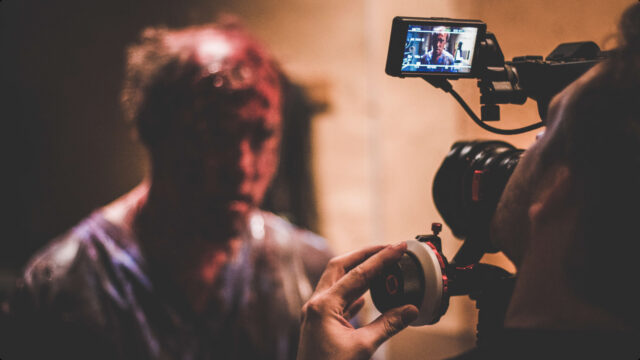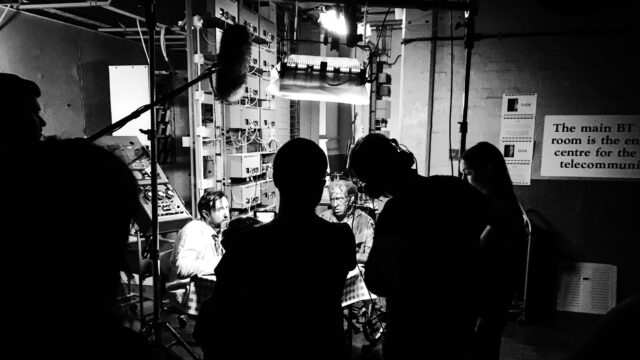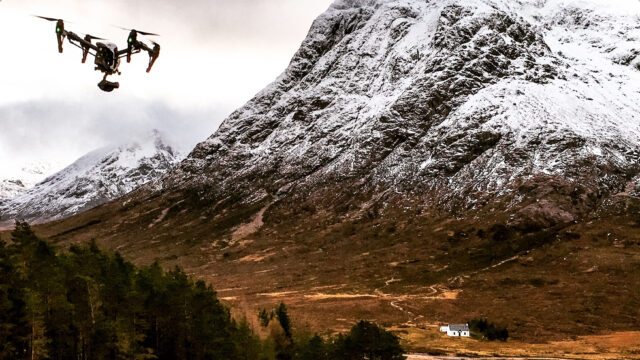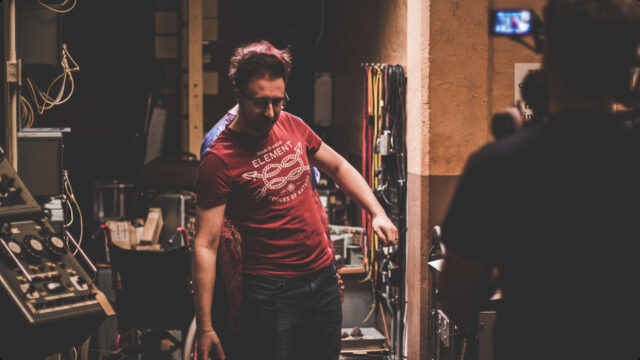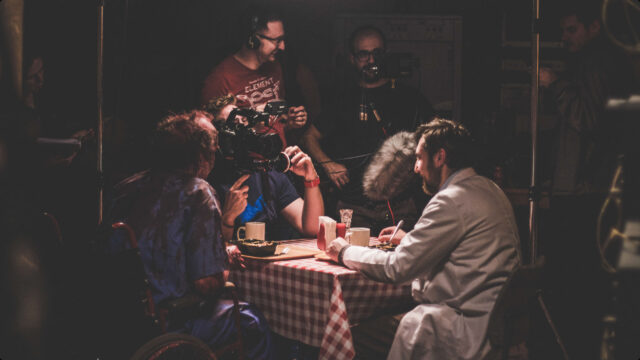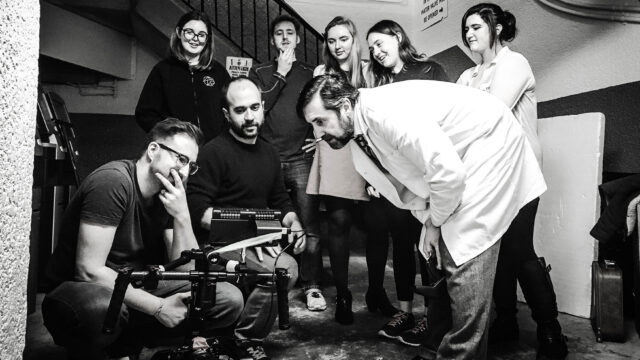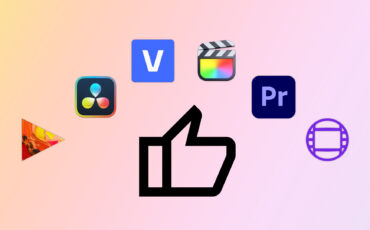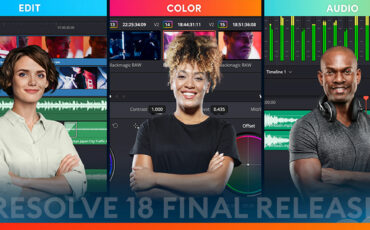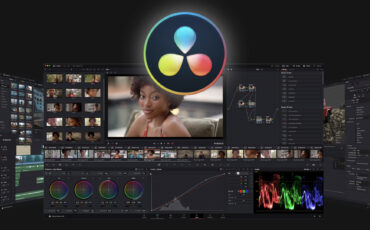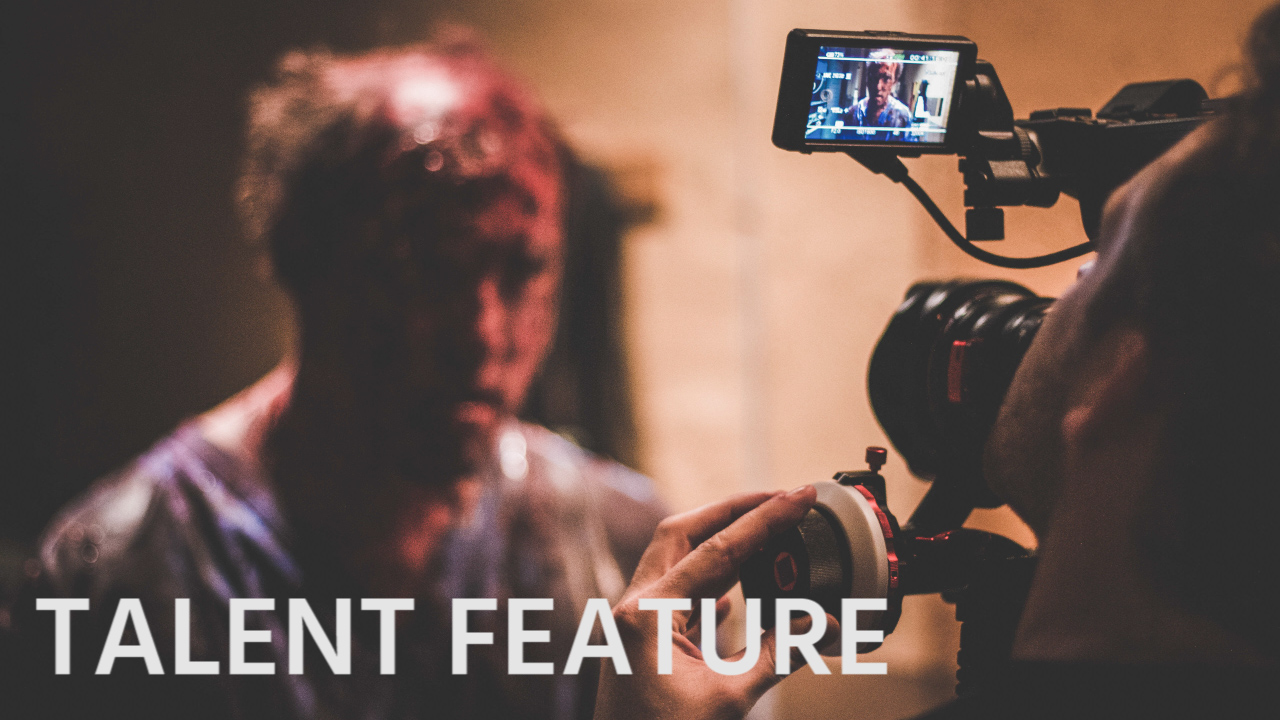
My name is John Lynch, and I live and work mostly in London. By day I’m a professional filmmaker for various brands and charities, but by night I’m trying to get a retro science fiction film universe off the ground. Same as most people, I guess?
The first big step towards that goal was taking time out from work to go out into the Scottish wilderness to shoot Eddie. It’s a short introduction to the world of a shady, ubiquitous mega-corporation called Overhead created by my good friend Jon Williams-Nobbs. At this point you really should watch the film… because later I’m going to quiz you on how you think it was made.
Name and age: John Lynch, 33 years old.
Currently based in: London, UK.
Language (s) spoken: English, very very basic Spanish, hmmm… does the language of cinema count?
Occupation: Professional Corporate & Commercial Filmmaker.
How did you get started in our industry? I’ve always been a film nut, even from a young age. When I was 16 I started making video sketches for a theatre and comedy sketch group I was part of. From there I went on to study film at University. I moved to London after Uni and I lost my way slightly. Struggling to get a job, I somehow ended up as a video technician for a corporate events company. I did that for a few years, then went freelance and slowly but surely moved away from the live events back to filmmaking just as the DSLR revolution and the birth of the ‘social media video’ happened. Since then, I’ve been directed and produced for all kinds of clients and agencies. I’ve directed cinema ads, worked as a specialist camera supervisor at the Olympics and even helped out on a few Bollywood shoots in my 11 year career thus far. It’s been weird, but fun.
Current assignments: Other than Eddie – which is a personal project – I’ve just finished an interesting piece for Halfords (a large UK retailer), where we shot a cinematic piece that was designed to be interacted with live on-stage by the company’s CEO at their yearly conference. It was a bit of a headache to put together such a complex, one-off type of film, but I think maybe I’m magnetically drawn to those types of projects – anything innovative or unique in someway.
What types of productions do you mostly shoot? Whilst I have produced some bigger projects such as cinema ads, for the most part I’m a self-shooter. I work with a client or agency to make videos that generally end up on their social media. I’ll go out and shoot, often alone or sometimes with a small crew, and then I’ll edit and post-produce for delivery for online or VOD platforms. I also work as often as I can in partnership with a close director friend of mine, Ian Martin, under the banner of Full Stop Film.
More and more we’re getting requests for films that can be made and delivered quickly. There’s not always time to get five different companies to do each stage. As a result, I’ve learned a lot about various parts of post-production in the last few years. This really helped when we I decided to knuckle-down and produce Eddie.
What is your dream assignment or job in our industry, and what are you really passionate about? My dream is to make feature films. In fact, just one feature film would be a good start! Like many people who visit cinema5D, I’m inspired in my work by my love of film and the pinnacle of what I do would be making films for the cinema.
Having said that, I’m aware of how incredibly lucky I am to be able to make a living doing what I do. If I don’t make it to the ‘big time’ I will continue to expand and develop my commercial slate, and I’ll always be hugely proud of the some of the work I currently do, such as the films for various charities that I’ve made with Full Stop Film.
In the work that you are presenting us, now that it is done, what would you have done differently throughout the production? Oh man, hundreds of things! And I feel the same after any shoot, especially the stuff I’m most proud of. Every shoot has got room for improvement! Any good filmmaker should yearn to create work that is better than what they’re currently capable of. That’s how you improve, so you’ve got to try and learn a lesson from every shoot you do.
On Eddie I wish I’d allowed more time to get what we needed in the bunker because the shooting schedule was far too packed. This lead to some excruciating choices on set as to when to move on from a scene or whether to cut certain shots or locations. Not having the time to sit down and go through a few quick tests when faced with a problem – say, with a lighting setup – ended up creating headaches in the post-production process that could have been fixed simply with better scheduling before the shoot began.
Because Eddie was self-funded, I was trying to save money, but some money-saving techniques are a false economy. If you are scheduling a shoot with crew right now and you think you can achieve any shot – no matter how simple – in under 15 minutes, you are kidding yourself! Just hoping it will all be fine does not end well either. Plan for everything to go wrong. Work back from there.
Some people maybe imagine being a director is some artistically uncompromising ‘all powerful’ role on set, but that’s not really the case. I always say that the true job description of a director should be “head of the compromise department”, because that’s what filmmaking really is: it’s the compromise between idea and reality that allows you to successfully turn a vision of something into an actual finished film.
Most people working on a film project will only have to concentrate on their own specific role, be it the DoP, Sound Recordist, Editor, whatever. The director is the one person who has to bear in mind how every single moving part comes together as a whole. To put it another way, the director is the only person sitting around the jigsaw puzzle who knows what the outcome is supposed to look like!
As a result, your job is to to channel those various individual departments together (none of whom want to skimp on their particular task) and make those all-important decisions as to when compromise has to be made. When to cut a shot. When a take is the last one. When to change up something that’s not working. The director has great power, yes, but even greater responsibility (and an even-greater-than-that headache, most of the time).
What current camera, lenses and sound equipment do you use? For bigger projects the decision will be based on the task at hand. Taking into account budget and vision of the project, I may use my own kit or hire in everything.
For my everyday jobs as a self-shooter, I own and operate a Sony PMW-FS5, which I love. Whilst there are better codecs and colour spaces out there in camera-land, I would say it’s just about the most versatile camera there is. So light, so compact, decent if not world-beating 4K, slo-mo, dual SD slots and, importantly, a reliable SDI output. I do a bit of live camera work and for that you need SDI without a ton of delay. For a while I had an Sony a7S which was stunning for recording promos but sucked big time as a live camera because of the HDMI and delay.
Glass-wise I use a Metabones Speed Booster and Canon L glass because I have a Canon DSLR body as well.
What did you choose to shoot your project with? Can you please describe why you chose to use it, what was your workflow, were you happy with the results and will you ever go that way again? So here’s where I ask the reader to guess. What does it look like we shot it with? Would it surprise you at all to hear that we actually used the FS5? Well, that’s what we did. For the simple reason that I owned it already, my DoPs were also familiar with it and so it saved us a ton of time and money (the self-funded budget for shooting Eddie was about £3,000 or $4,000).
We also shot in 4K with that much-maligned 8-bit colour space, ending up with a 2K master after the edit. Did you spot that watching it? Did you have niggling doubts about whether the colour space was 8-bit or 10-bit during the film? I mean, if you did, then I failed as a filmmaker because it must have been pretty boring!
My point here is that we used this camera because its positives for this project (versatility, of both the camera body but also of the 4K rushes) far outweighed the negatives. Despite the colour space I didn’t have any problems grading it in Resolve the way I wanted in post because we took the time to light scenes properly.
I think it’s way too easy to get caught up in the technical fetishisation of filmmaking sometimes, and not think about the practical side of it. With Eddie, I think we balanced the compromises well and, in my opinion, using a cheaper camera didn’t stop it from looking great.
What’s your favorite light equipment and why did you choose that kit over other solutions? I love the classics. KinoFlo Divalites are cheap to rent and in the world of 35mm sensor cameras are just perfect for so many situations. The LED ones are great too, but there’s plenty of life left in those fluorescent fixtures.
Eddie was actually shot with a pair of Cineo HS Wave LED panels (which we got because the hire company had run out of KinoFlos – lucky us!), a bunch of F&V Z180 mini panels and then the rest was practical lighting from the bunker. The top-down fluorescent look obviously works for a film shot in a nuclear bunker. However, the bunker itself had lots of odd-coloured fixtures in various places, so there was a lot of ladder-climbing and replacing of fluorescent tubes going on!
Do you use drones or gimbals in your productions? If so, what is the most effective way you’ve found to deploy them? Indeed we did. We had a DJI Ronin and an Inspire One X5 (both DoP’s own). We used them in a way that I would heartily recommend… narratively and sparingly!
There are maybe 3 or 4 tracking shots in the film that just help accentuate the huge underground space of the bunker. I don’t believe in using a gimbal for the sake of it, because it kills your camera ops and wastes time. We would ask ourselves how the gimbal would improve the story, rather than just the ‘shot’.
Then the Inspire was used fairly obviously to show off our stunning exterior location and accentuate the isolated wilderness beyond the bunker.
What editing systems do you use? Whilst I dabbled in Final Cut for a while, I have always been an Adobe Premiere user. I also use After Effects, Audition, Photoshop, Lightroom and Illustrator regularly for work, so it just makes total sense to me.
In the last couple of years I’ve also really gotten into DaVinci Resolve for color grading. However, that is becoming a more and more full-featured NLE all the time and so if someone was starting out maybe I’d recommend that. After all it’s free, which is amazing.
How much of your work do you shoot in Log and what is your preferred way of colour correcting? Here’s where I might lose a few fans, but to be honest I rarely shoot in Log on a day-to-day basis. I find shooting in Log adds complication and faff to the shooting process and then a fair chunk of extra work in post that is simply not worth it when working on something with a fast turn around or tight budget.
Don’t get me wrong, I totally understand the benefits of shooting Log and sure, the ads I made and a few bigger projects I did shoot in Log because the post-production was scheduled and budgeted for. But more and more I can see that shooting in Log is being used almost as a crutch by filmmakers as a way of getting around doing things properly on set because they think Log will mean it can all be fixed in post.
I see more agencies and production companies demanding that everything be shot in Log because “it’s the best way” as though time, practicality and budget shouldn’t come into consideration. That annoys me because it usually means they don’t have a solid vision of where the project is going.
The result is that I see more and more videos online that were clearly shot in Log, but then didn’t have the time or skill to get the raw footage how they wanted in the grade, resulting in a washed-out look that’s dull as hell. It’s almost become a style thing, as if it’s a more ‘filmic’ to have bleached out contrast and raised blacks. But if you have a look at beautiful films shot on actual celluloid, they don’t look like that. They have contrast, they have shadows, they have colour! Maybe it’s because I’m from the UK where life looks pretty grey most of the time, but I like a bit of colour in my films!
What about Eddie, though? Do you think that was shot in Log? Well the answer is no… but not for the reason stated above. We actually wanted to shoot in S-Log 3, but we did some camera tests in the bunker on our get-in day and came across some problems. We noticed that when applying the film LUT I was planning to use in post, we were getting tons of noise in the shadows, no matter how much we compensated for with exposure. And as you have seen, Eddie is a film dominated by shadows! So we took the decision to shoot in the Cine4 gamma/colour profile instead, and oh boy am I glad we did. It worked much better and with hardly any noise, so we averted a disaster. We only had this lucky escape because we had planned from the beginning how we wanted the final film to look and researched our post-production process. This is the moral of the story. Log should be used as a tool to achieve a predefined vision and not as attempt to negate having to have one!
How frequently do you travel, and do you have any tips when it comes to packing your gear? I do often travel and I like to travel light. I have an F-Stop Loka UL backpack that I can get the Sony FS5 and a solid run-and-gun kit into. That bag (without tripod) will actually go under the seat in a pinch on a plane.
However, I can’t get everything I own into that one bag. So my main tip if you’re travelling is to think about what you are going to make before you get on a plane. If the budget doesn’t allow you to hire in all that you need on location or to travel with an entourage of Pelicases, then commit yourself to a style or idea and pack accordingly. Don’t take loads of unnecessary kit. Sometimes limiting yourself actually forces you to be a better filmmaker.
You can learn more about Eddie by John Lynch by clicking here
